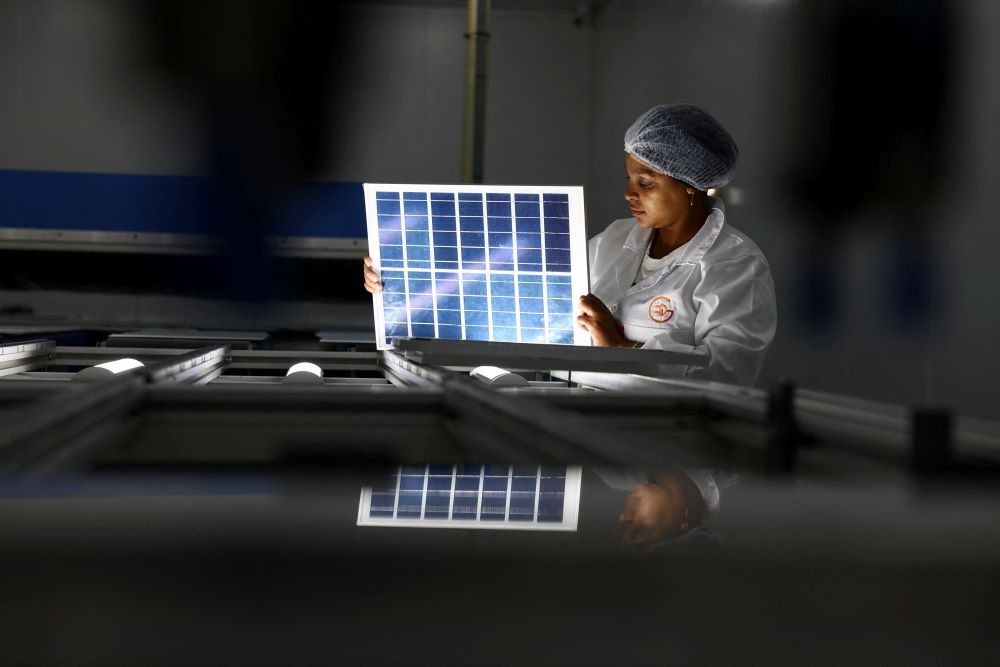Natalie Jones is a policy advisor on the energy programme at the International Institute for Sustainable Development (IISD). She holds a PhD in international law from the University of Cambridge.
It’s a quiet climate success story: over 40 countries and public finance institutions have cut their international public finance to fossil fuels by two-thirds over the past three years.
At the COP 26 climate talks in Glasgow, UK, 39 countries and public finance institutions launched the Clean Energy Transition Partnership (CETP). They committed to end their overseas public support for fossil fuels and instead scale up their support for clean energy. Joined by Norway and Australia at COP 28, the partnership now numbers 41.
Our research finds that countries are largely delivering on their promise. Signatories’ collective fossil fuel financing in 2023 amounted to $5.2 billion, a decrease of two-thirds from the pre-CETP baseline. This is a historic achievement.
There are a few laggards, such as the United States, Italy, Switzerland and Germany, which either still need to change their policies or have passed substandard policies that leave large loopholes for fossil fuel financing. However, even among these signatories fossil fuel finance is falling.
Clean energy for the rich?
That’s the good news. The bad news, however, is that signatories did not scale up their clean energy finance by nearly the same amount. Countries financed $21 billion in clean energy in 2023, only a 16% increase from the pre-CETP baseline.
Some countries, such as Canada and Denmark, substantially increased their clean energy financing. However, others like France and Sweden actually cut their clean energy support since 2021.
Source: IISD report, August 2024: Out With the Old, Slow With the New
Source: IISD report, August 2024: Out With the Old, Slow With the New
This is symptomatic of a larger issue. In 2023, China and advanced economies accounted for 90% of new solar PV and wind capacity installations, and 85% of investment in renewable energy. The lack of clean energy investment going to emerging and developing economies (EMDEs) outside of China is a worrying trend.
Crowding in private investment
Public finance is critical to bridge the gap in clean energy investment. It can lower risk for other investors because it is often provided at preferential below-market rates and longer time horizons. This can crowd in much larger flows of private investment for proposed projects.
The International Energy Agency estimates that for the world to stay on a 1.5°C pathway, annual concessional funding in EMDEs from developed economies and development finance institutions would need to reach $80-100 billion annually by 2030.
CETP signatories, and other high-income countries and public financial institutions, have an important role to play in scaling up concessional finance for the energy transition in EMDEs. They need to adopt ambitious and quantitative targets for rapidly scaling up good-quality public finance for clean energy.
To meet the CETP’s clean energy commitment, signatories should, at the very least, aim to provide as much clean energy finance per year as their average pre-CETP fossil fuel support. Ideally, policies should stipulate much larger amounts.
Avoiding more debt stress
Policies should target low-income countries for finance to achieve universal energy access. The cost of capital is often higher in these countries due to a range of fiscal, socioeconomic and climate risks. But that should not be an excuse for public development finance institutions not to invest, since they are not driven by the profit motive.
To be effective, financing needs to be high-quality. From 2020 to 2022, 83% of signatories’ international clean energy finance to low- and lower-middle-income countries was delivered through loans.
Clean energy finance must not further burden Global South countries, which are spending almost half their budgets servicing debts. Policies must ensure a much larger portion will be delivered through grants and highly concessional instruments.
Switzerland and Canada propose ways to expand climate finance donors
The story is not over in terms of shifting public money away from fossil fuels. China, Republic of Korea and Japan are not CETP members, and together they continue to provide an average of $21 billion annually in international public finance for fossil fuels. The next step is to bring these countries along with G20 countries and multilateral development banks on board with the CETP initiative.
Domestic public finance for fossil fuels persists, as well as fossil fuel subsidies. Globally, fossil fuel subsidies alone exceeded $1.5 trillion in 2022. Ending these subsidies can free up even more public money to invest in solutions for people and planet.
In the year of the new climate finance goal to be agreed at COP 29 in Baku, Azerbaijan, every penny counts.
